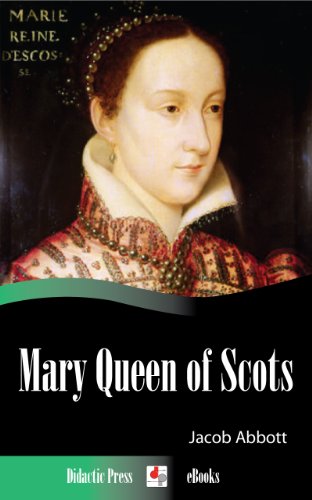-
Stories from Hans Christian Andersen
Hans Christian Andersen, Edmund Dulac
eBook (Didactic Press, Dec. 4, 2013)The original master of the Fairy Tale, Hans Christian Andersen, presented here with the best of his works, accompanied by fantastic illustrations from Edmund Dulac. Andersen's tales have inspired countless movies and really have inspired and intrigued children of all ages to the wonder of fantasy. If you haven't had the pleasure of reading his work, or if you've never been exposed to the beautiful imagery of Edmund Dulac, you are in for a special treat!Contents include:THE SNOW QUEENTHE NIGHTINGALETHE REAL PRINCESSTHE GARDEN OF PARADISETHE MERMAIDTHE EMPEROR'S NEW CLOTHESTHE WIND'S TALE
-
Leo Tolstoy's Stories for Children
Leo Tolstoy
language (Didactic Press, March 26, 2014)An excellent collection of master-storyteller Leo Tolstoy's Stories for Children. Tolstoy retells the wonderful fables from Aesop, old Hindu tales and Russian shorts as well as legends that transcend borders and continents. Formatted for Kindle devices and the Kindle for iOS apps.
-
The Aeneid for Children
Alfred Church
eBook (Didactic Press, May 23, 2013)A classic retelling of the Aeneid by Virgil, a story about the adventurer Aeneas, who escaped from the final destruction of Troy and eventually made his way to the Italian peninsula to found the city of Rome. Fully illustrated and formatted for Kindle devices and the Kindle for iOS app.
-
The Discovery of New Worlds
M.B. Synge
eBook (Didactic Press, Sept. 22, 2013)The second book of the Story of the World series, focusing on the rise and fall of the Roman Empire, into and through the Dark Ages, and concluding with the age of exploration. Richly illustrated throughout to enhance the reading experience.Contents include:The Roman WorldA Great World PowerVoyage and ShipwreckThe Tragedy of NeroThe Great Fire in RomeThe Destruction of PompeiiMarcus AureliusDecline of the Roman EmpireChristians to the LionsThe Armies of the NorthThe Dark AgesKing Arthur and His KnightsThe Hero of Two NationsThe Hardy NorthmenHow the Northmen Conquered EnglandA Spanish HeroThe First CrusadeFrederick BarbarossaThe Third CrusadeThe Days of ChivalryQueen of the AdriaticThe Story of Marco PoloDante's Great PoemThe Maid of OrleansThe Sea of DarknessPrince Henry, the SailorA Famous VoyageThe Invention of PrintingThe Stormy CapeVasco da Gama's Great VoyageIndia at LastThe New Trade-RouteGolden GoaChristopher ColumbusThe Last of the MoorsDiscovery of the New WorldThe West IndiesColumbus in ChainsA Great MistakeFollow the LeaderDiscovery of the PacificMagellan's Great PlanMagellan's StraitsRound the WorldThe Finding of MexicoMontezumaSiege and Fall of MexicoConquest of PeruA Great Awakening
-
Mary Queen of Scots
Jacob Abbott
eBook (Didactic Press, Dec. 30, 2013)A biographical history of the girl who became Queen: Mary, Queen of Scots. A truly tragic story of a girl who would become the embodiment of her own predestined tragedy, this eBook is a must-read for those looking to know more about one of the more fascinating British monarchs.Contents include: Mary's Childhood.Her Education in France.The Great WeddingMisfortunes.Return To Scotland.Mary and Lord Darnley.Rizzio.Bothwell.The Fall of Bothwell.Loch Leven Castle.The Long Captivity.The End.
-
On the Shores of the Great Sea
M.B. Synge
language (Didactic Press, Sept. 22, 2013)The first book of the Story of the World series, focusing on the civilizations arising around the Mediterranean Sea. Covering the era from the birth of Abraham to the birth of Jesus Christ, this book serves as a fantastic introduction to world history. Contents include: The Home of AbrahamInto AfricaAn Old Trade RouteJoseph in EgyptThe Story of the Nile FloodIn a Strange LandThe Children of IsraelBack to the FatherlandThe First Merchant FleetConquerors of the SeaEarly PioneersHiram, King of TyreKing Solomon's FleetThe Story of CarthageOut of the ShadowlandThe Story of the ArgonautsThe Siege of TroyThe Adventures of UlyssesThe Dawn of HistoryThe Fall of TyreThe Rise of CarthageHanno's AdventuresSome More about GreeceA Cloud in the EastThe Battle of MarathonKing AhasuerusHow Leonidas Kept the PassVictory for the GreeksSome Greek ColoniesAcross the Blue WatersThe Beauty of AthensThe Death of SocratesRetreat of the Ten ThousandThe Story of Romulus and RemusHow Horatius Kept the BridgeCoriolanusAlexander the GreatKing of MacedoniaConquest of the EastThe Conquest of IndiaAlexander's CityBack to Rome AgainA Great ConflictThe Roman FleetHannibal's VowThe Adventures of HannibalThe End of CarthageThe Triumph of RomeTwo Young RomansJulius CæsarThe Flight of PompeyThe Death of CæsarThe Empire of RomePax Romana
-
The Jews Under Roman Rule
W.D. Morrison
eBook (Didactic Press, Sept. 26, 2013)The epoch of which this volume professes to treat embraces a period of about three hundred years (B.C. 164 to A.D. 135), and has an intimate bearing on one of the most momentous turning-points in the history of the world. The first half of this period is almost co-incident with the formation of the great confederation of Mediterranean states under the supremacy of Rome—a confederation which constituted the most important external preparation for the success of Christianity; the second half is co-incident with the birth development and primitive organization of the Christian faith. These are events which gave a new direction to the history of humanity in the West; they are the starting-points of a fresh era in the life of the world; unlike some of the records of antiquity, an account of them is not merely a revelation of what has transpired in the past; at the present moment they are still exercising an immense influence on the deepest sentiments of mankind.
-
The Story of Abraham Lincoln
Mary Hamilton
eBook (Didactic Press, June 1, 2013)A beautiful introduction to the mythical life of Abraham Lincoln, one of the greatest presidents of the United States of America. Formatted for the Kindle devices and the Kindle for iOS apps.
-
A Short Introduction to the Sack of Rome A.D. 1527
Benvenuto Cellini, Adolphus Trollope
eBook (Didactic Press, June 11, 2014)Charles, Duc de Bourbon, known as the Constable de Bourbon, became famous in the wars of the emperor Charles V with Francis I, King of France. The vast estates of both branches of the Bourbon family were united in the possession of the Constable, making him a person of importance independently of his military career. He was born in 1490, and was made Constable of France for his services at the battle of Melegnano (1515), in which Francis gained a brilliant victory over the Swiss.The attempt of powerful enemies to undermine Bourbon in the favor of the King led to the threatened loss of the Constable's dignities and lands, and provoked him to renounce the French service. After making a secret treaty with Charles V and with his ally, Henry VIII of England, Bourbon led a force of German mercenaries into Lombardy, where in 1523 he joined Charles' Spanish army, and next year aided in driving the French from Italy. Invading France, he marched under the Emperor's orders to Marseilles and laid siege to the city, but failed to take it.Bourbon contributed materially to the Emperor's great victory at Pavia, and was rewarded by being made Duke of Milan and commander in Northern Italy. But although Charles thus honored Bourbon he did not trust him, and was not really desirous of advancing a person of such great resource and consequence. In the peace between Spain and France in 1526 Bourbon's great interests were neglected. Notwithstanding these things, when Charles V wished to punish Pope Clement VII, who had joined a league against him, Bourbon, with George of Frundsberg, led an army of Spanish and German mercenaries to Rome.The description of the sack which followed, written by Benvenuto Cellini, the celebrated Italian artist, shows him as an effective participant in the defence. This account of a combatant is of course only fragmentary, and is supplemented by Trollope's critical narrative.
-
The Story of Joan of Arc
Andrew Lang
eBook (Didactic Press, Aug. 4, 2013)The Story of Joan of Arc, a story of a peasant girl, the lowest of the low with no knowledge of politics or military doctrine who came to lead the armies of France against the English at Orleans. She managed to overcome her station in life and embody a destiny greater than she knew, turning the tide of the Hundred Years' War. Her story is the story of a miracle, at once inspiring at the sheer heights she ascended, and a tragedy, as her ultimate betrayal and death can attest.
-
The Story of Joan of Arc
Andrew Lang
eBook (Didactic Press, Aug. 4, 2013)The Story of Joan of Arc, a story of a peasant girl, the lowest of the low with no knowledge of politics or military doctrine who came to lead the armies of France against the English at Orleans. She managed to overcome her station in life and embody a destiny greater than she knew, turning the tide of the Hundred Years' War. Her story is the story of a miracle, at once inspiring at the sheer heights she ascended, and a tragedy, as her ultimate betrayal and death can attest.
-
The Story of Joan of Arc
Andrew Lang
eBook (Didactic Press, Aug. 4, 2013)The Story of Joan of Arc, a story of a peasant girl, the lowest of the low with no knowledge of politics or military doctrine who came to lead the armies of France against the English at Orleans. She managed to overcome her station in life and embody a destiny greater than she knew, turning the tide of the Hundred Years' War. Her story is the story of a miracle, at once inspiring at the sheer heights she ascended, and a tragedy, as her ultimate betrayal and death can attest.